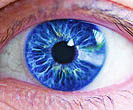New DreamTV Keeps Viewers Tuned In While They Sleep
Philadelphia, June 16, 2018 -- ToshibaSonyMagnavoxivision (TSM) yesterday announced the launch of their new, updated Dream TV Sleep Entertainment System, the DreamTV rEM99. A spokesman for TSM said, "We're absolutely delighted with the opportunities offered by the updated system, and are positive that consumers worldwide will be astonished with the ease and versatility with which it fulfils all of their sleep entertainment needs."
The DreamTV rEM99 promises a full 99 channels of full-quadruplex REM-sleep entertainment with maximum clarity, minimal distortion, and full, semi-conscious remote regulatory capacity. TSM said it expects to sell the complete first batch of 500,000 units within the next two months.
DreamTV, now a virtual household word, was first launched by TSM in late 2014, achieving slim initial volume sales due to consumer skepticism. The product has quickly grown both in consumer acceptance and popularity, however, with sales now equal to or outstripping those of popular portable entertainment devices such as the M88 Wolverine Pocket Prowler and the Suni Pogo Triptek Player.
Based on quantum laser technology, particularly the "optical frequency comb technique" originally discovered and developed by the three winners of the 2005 Nobel Prize for Physics, Roy J. Glauber, John L. Hall and Theodor W. Hänsch, DreamTV works by channeling exterior synthetic audio-visual stimuli via the hair follicles directly into the "dream center" of the brain, located somewhere toward the back of that complex organ. The signals create a subtle variation on "lucid dreaming", a poorly understood process whereby a sleeping individual can control the process of a dream.
"We've tapped into the lucid dreaming functionality, but only so far as to provide the ability to preview and change channels on DreamTV. Plot and character elements are still defined externally," said Jacqueline Kibble, technical manager at TSM.
The DreamTV signals activate cortical neurons within the special "dream center", using the optical frequency comb technique of Glauber, Hall and Hänsch, providing an astonishing "live" experience of entertainment while sleeping.
"Our waveform transducers can modify a traditional HDTV broadcast into reverse electroencephalographic signals on the fly," said Kibble. "The signals are then retransmitted directly into the cortex of a sleeper via the hair follicles, using the comb technique. A sleeper is thus inserted directly into the action of his or her favorite shows. No longer do TV viewers have to suffer the fear of missing their favorite programs due to the intrusion of sleep. With DreamTV, you can watch the big match, follow the news, stay on top of your favorite 'reality' stars or indulge in some of our erotic channels all while enjoying a restful, rejuvenating nightly sleep episode."
Kibble added that a full head of hair is not an absolute requirement for the successful use of the DreamTV unit.
"It's an advantage, certainly, but by no means a prerequisite," said Kibble. "We have a unit specially designed for the follicularly challenged, the DreamTV rEM99 SlpRug, featuring an add-on that fits neatly over the scalp, much like an old-fashioned sleeping cap. The only difference, really, is the mat of 4,000 short electrodes that penetrate about 3 millimeters into the skull."
DreamTV rEM99 interfaces with traditional broadcast cable, digital airwave or satellite entertainment via a "small, discreet transductional adapter unit", a 380kg. fully-encased rack-laser system in the shape of a full-size Shetland pony. "They're a beautiful addition to any bedchamber," said Kibble.
By Ion Zwitter, Avant News Editor
Related stories
- Ashton Kutcher to Host Twitter's Reality TV Show
- Citigroup, Bank of America Announce ATM Instant Equity Exchange Program
- Pledging "Fresh, Clean Start", Disney Clones Britney
- Cognitive Dissonance May Provide Cure To Non-Existent Global Warming
- Windows Vista Startup Music Designed on Macs
- Organic Windows Vista Virus Can Target Computers Even When Powered Down
- Wider Panama Canal Makes Room for Airbus A380
- FBI to Test Televised Sting Operation with Who Wants to Be a Terrorist
- Paris Hilton and Nicole Richie to Defuse North Korea's Nuclear Ambitions
Copyright © 2005-2505 AvantNews.com. All rights reserved.
Avant News contains satire and other fictional material, provided for entertainment purposes only. Disclaimer. Syndicate. Privacy.











